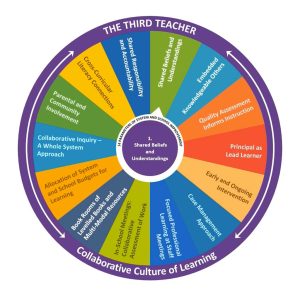
What If Students Aren’t Progressing!
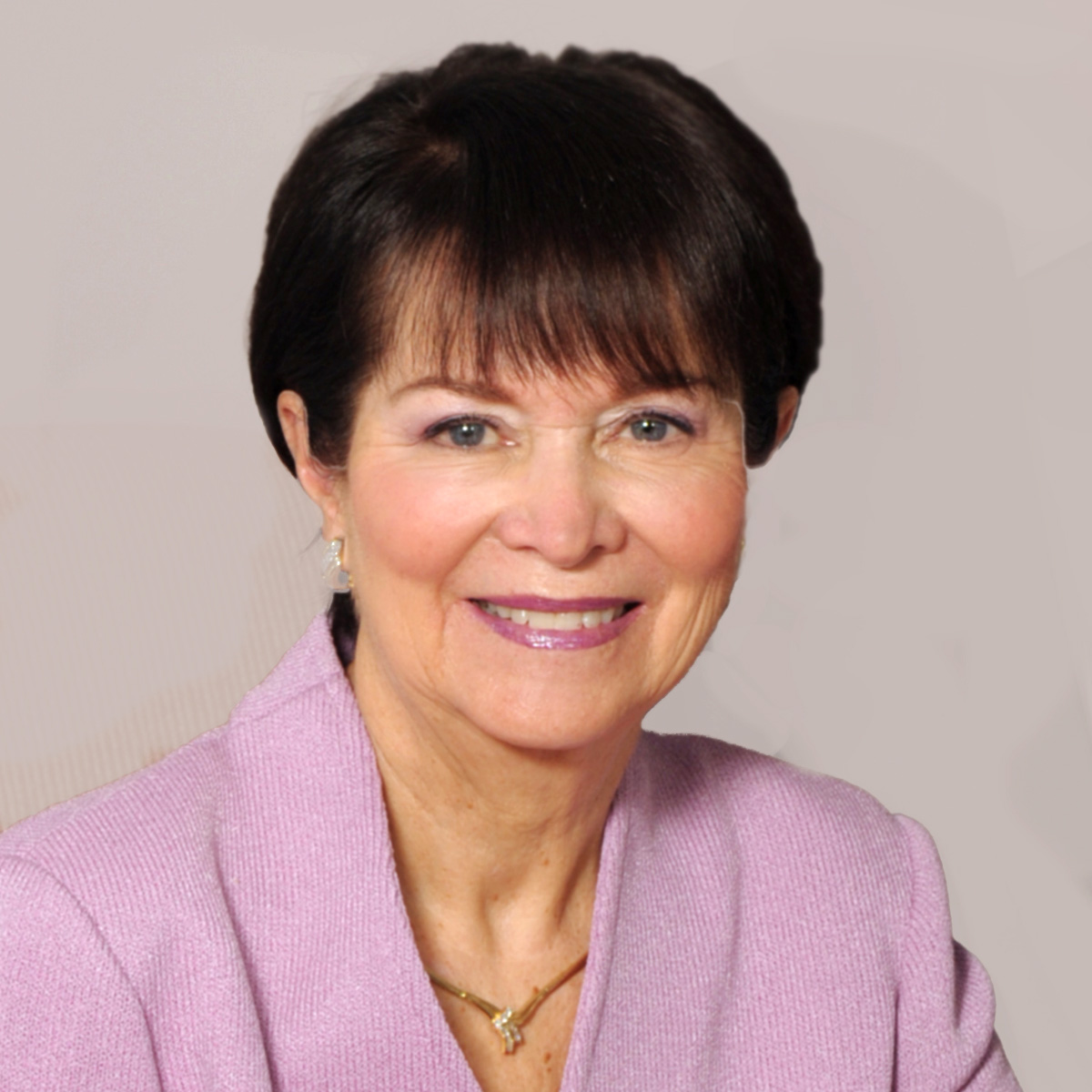
|
Dr. Lyn Sharratt |
05 December 2021
Being accountable and responsible for the performance of a very large district that was under-performing, I have seen in retrospect that as we began our research and learning journey we were asking two questions:: “How can we raise all students’ achievement across the system?, and, “How quickly can we begin?”. Now, in my current work with many jurisdictions asking the same questions, , I ask another important third question, “How do we ensure equity along with the excellence we are striving to develop?”. The answers to “what can we do” and “provision of equity and excellence” lie within the power of the 14 Parameter Framework as systems bring it to life. The answer re the urgency question was that we were determined ‘not to wait’.
This now well-researched 14 Parameter Improvement Framework, shown in Figure 1.2, has been replicated often with other system leaders. Working to get deeply into each component, they have found the interconnectedness (Figure 1.4) among all 14 areas or Parameters of System and School improvement (Sharratt & Fullan, 2012; Sharratt, 2019). As they have done so, many have generated the sense of urgency required to implement and sustain the improvement push.
- Shared beliefs and understandings
- All students can achieve high standards given the right time and the right support.
- All teachers can teach to high standards given time and the right assistance.
- High expectations and early and ongoing intervention are essential.
- All leaders, teachers, and students can articulate what they do and why they lead, teach, and learn the way they do. (Adapted from Hill & Crévola, 1999)
- Embedded Knowledgeable Others
- Quality assessment informs instruction
- Principal as lead learner
- Early and ongoing intervention
- Case management approach
- Focused Professional Learning at staff meetings
- In-school meetings—collaborative assessment of student work
- Book rooms of leveled books and multi-modal resources
- Allocation of system and school budgets for learning
- Collaborative Inquiry—a whole-system approach
- Parental and community involvement
- Cross-curricular literacy connections
- Shared responsibility and accountability
- We all own all the FACES!
The secret is giving time to and consideration of each improvement area, employing the 14 Parameter Framework as a self-reflection tool. Using relevant student data, leaders and teachers in successful systems continually ask, ‘What’s Working’? ‘Even better if…?’ ‘Where do we need to recalculate, refocus, and refine our practices’ using these 14 Parameters as the vehicle?’ If you know what works – and what you need to do, how long will you wait until every student is growing and achieving at the expected level? Illiteracy is unacceptable. How great is your sense of urgency? How long will you wait?
The 14 Parameters is a practice-mapping device that demands that users ask themselves the tough questions to uncover what PRECISION-in-PRACTICE IS in: 1. Quality Learning; 2. Quality Teaching; and 3. Quality Leading.
1. To achieve Quality Learning …are we:
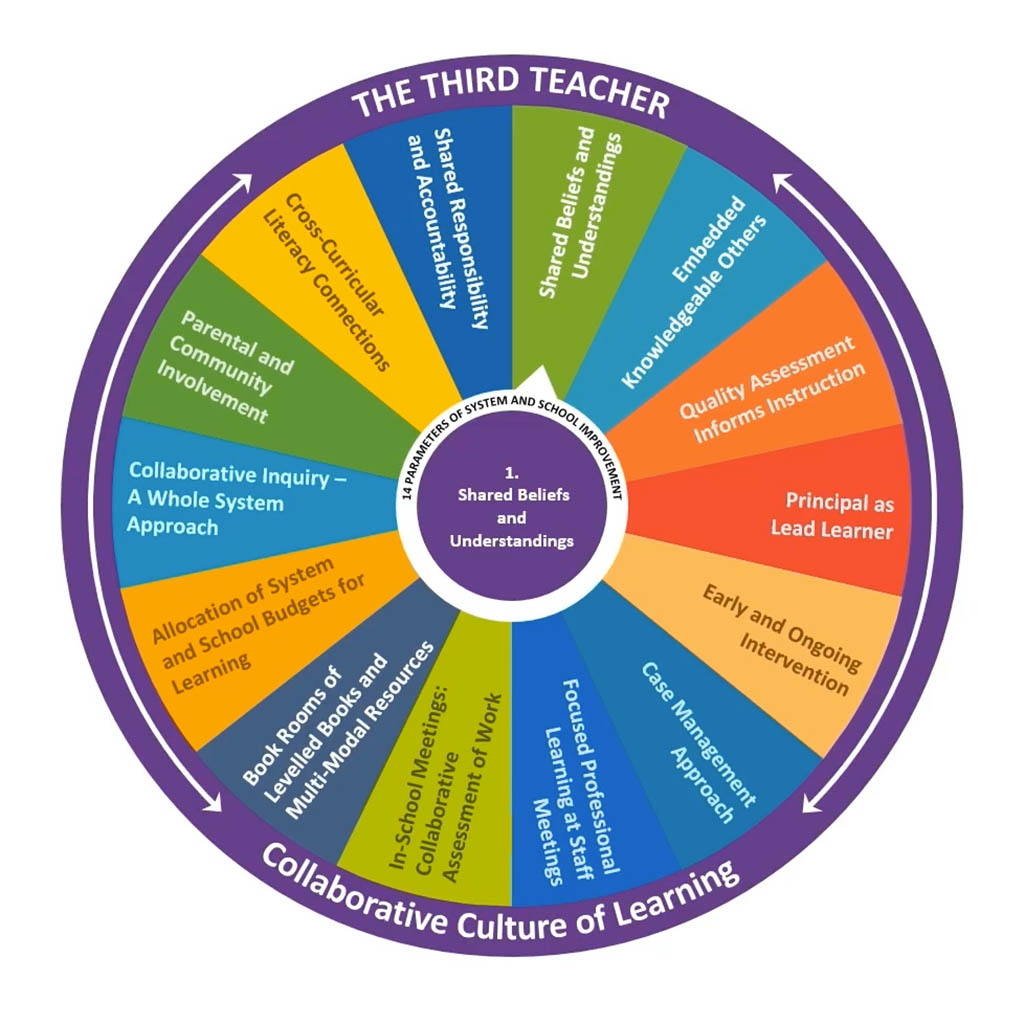
- using the 14 Parameters as a lens to assess system/school progress – and take necessary action?
- making social/emotional connections with and having cognitive insights to each FACE in our care?
- singularly focusing on one priority and aligning budgets, resources and Professional Learning to it?
- making time for system, regional and school teams to learn together, within and across schools, using Video Conferencing where necessary, focused on students’ FACES through pieces of student work?
- co-constructing Data Walls, (See Figure 7.6) with staff to ensure all students are being tracked to know not only their achievement but also growth and expected next steps?
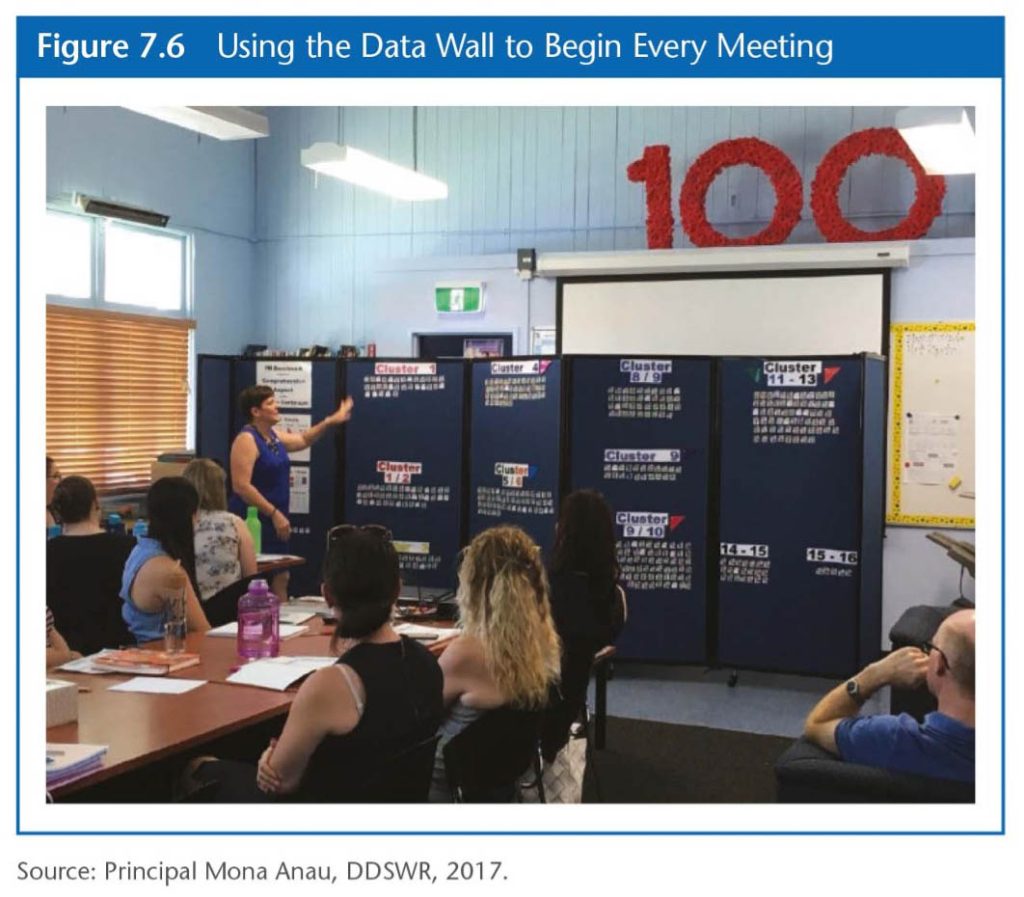
- holding on-gong Case Management Meetings, seated in front of the Data Wall (Figure 7.6) to build teacher and leader capacity to teach all students?
- starting every meeting with varying data sources to promote rich discussion about instruction – considering student work samples as data?
- clearly articulating that every teacher and leader is an ‘Intervention teacher’?
2. To achieve Quality Teaching … are we:
- ensuring our best teachers are teaching the most struggling students and that Teaching Assistants are NOT teaching new content or taking Running Records but supporting the application of content during practice time in classrooms?
- noticing the construction of “The Third Teacher” where students and teachers co-construct meaningful environments filled with scaffolds to support students in their learning?
- hearing students answer the 5 questions:
- What am I learning? Why?
- How am I going?
- How do I know how I am going?
- How can I improve?
- Where can I go for help?
to determine how clear and precise elements of the Assessment Waterfall Chart (Figure 4.4) are in every classroom?
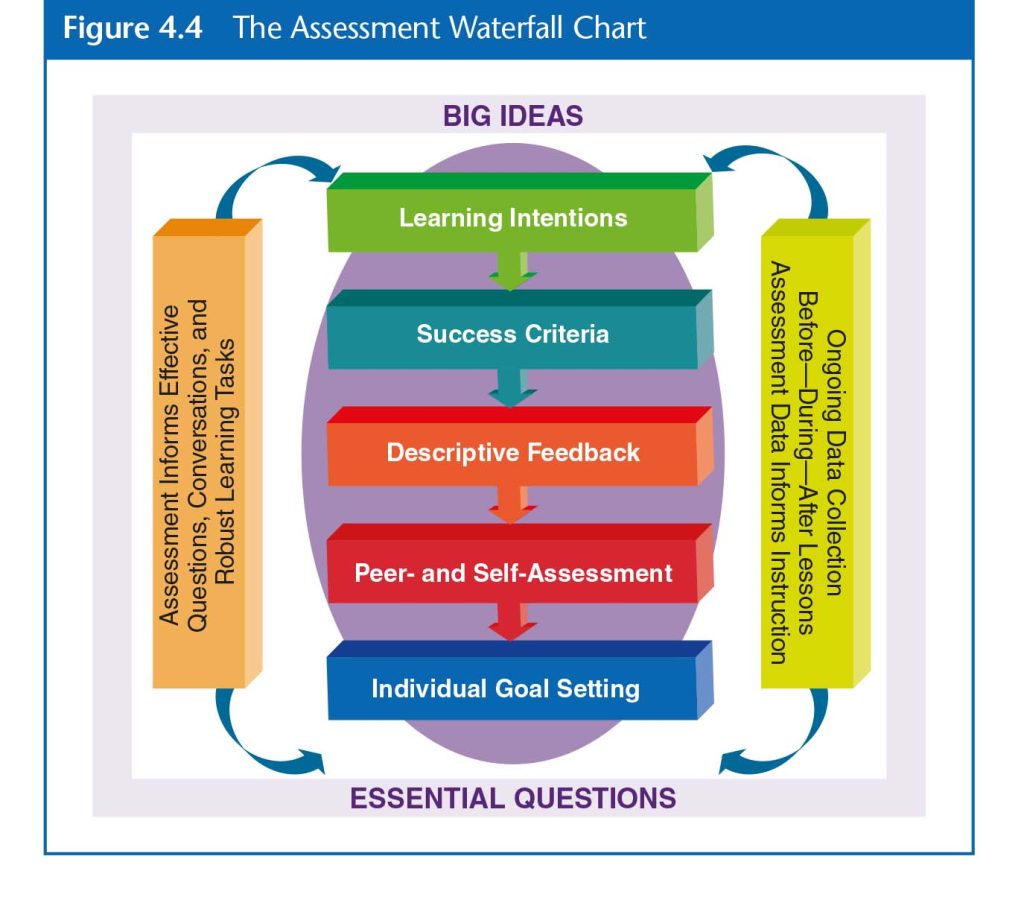
- seeing students’ assessment data collected continuously and interpreted accurately to inform instruction the very next minute – K-12?
- experiencing the “just right” resources being used to differentiate instruction?
- looking for every student Reading and Writing independently every day, in every subject area?
- examining the “Cognitive Demands” of performance tasks in all subject areas to ensure they demand higher-order thinking?
- ensuring that All teachers know what to do if students are not Reading and Writing at Standard, K-12?
3. To achieve Quality Leading … are we:
- ensuring that we have at least one “Knowledgeable Other”/Instructional Leader in the midst of every learning-focused meeting (otherwise, we are just sharing ignorance)?
- articulating clear, consistent messages re setting Performance Targets, investigating instructional approaches to meet the needs of every student, then measuring our IMPACT?
- engaging in Learning Walks and Talks daily starting at the Data Wall and asking pointed questions – what/who do we need to know more about? Who will follow-up? When?
- publishing the “look-fors” of high-impact expected and effective practices, so leaders know what to look for in their daily Learning Walks and Talks?
- leaving no vague messages with teachers or school leaders – the secret is to be consistent, insistent and persistent in modelling and monitoring expected high-impact practices in every classroom including by offering quality descriptive feedback or asking real questions to better understand what was observed?
- at the school level, ensuring the use of two frameworks in School/System Improvement Planning: 1. Professional Learning Framework: The 14 Parameters; and 2. Pedagogical Framework: Modelled – Shared – Guided – Independent + the ‘5th Dimension’: Application (CLARITY, 2019) that leads to interdependence and learner empowerment?
- embracing the understanding that there no pre-packaged programs can make a difference to increasing All students’ Growth and Achievement?
- acknowledging and actioning our leadership responsibility to support teachers’ capacity-building to teach ALL students, using assessment data daily to inform instructional approaches differentiated for each FACE?
These are the questions that strong leaders ask while co-labouring alongside teachers and other leaders. These are the questions that help us stay the course and hold our nerve until we get the results we want. Using these questions and developing the work, found deep in the details of the 14 Parameters, provides CLARITY. Remember, CLARITY develops within the work, not before we go, but as we go.
Returning to my 3 questions: How do we improve student achievement and growth? How do we assure equity and excellence? How quickly can we get started? I simply want to ask you to think about…
HOW LONG WILL YOU WAIT?
Every individual student’s, teacher’s and leader’s FACE MATTERS!
References
Hill, P. W., & Crévola, C. A. (1999). The role of standards in educational reform for the 21st century. In D. D. Marsh (Ed.), ASCD yearbook 1999: Preparing our schools for the 21st century (pp. 117–142). Alexandria, VA: Association for Supervision and Curriculum Development.
Sharratt, L., & Fullan, M. (2012). Putting FACES on the data: What great leaders do! Thousand Oaks, CA: Corwin.
Sharratt, L. (2019). CLARITY: What matters MOST in learning, teaching and leading. Thousand Oaks, CA: Corwin.
Join the CLARITY Learning Suite
Take part in the conversations about this and other Blog posts.